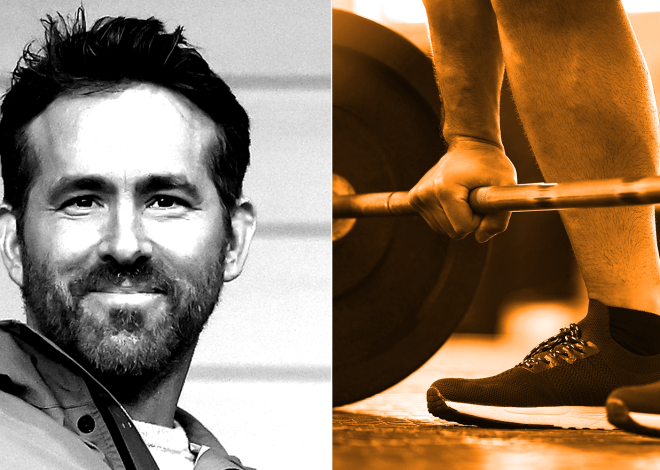
How long should you be able to plank?
Press

The plank is considered a classic bodyweight exercise for strengthening the core muscles. While some strive for records, others wonder how long an effective plank really should be. This is what experts and studies recommend.
Some love him, others hate him. What is undisputed is that the plank is an effective exercise using your own body weight to strengthen your core muscles. It is part of many bodyweight workouts and offers numerous variations for different fitness levels. It is particularly popular to take part in plank challenges to find out who can hold the position the longest or to improve your personal record. And many fitness fans ask themselves: How long should you actually be able to plank so that you can say you have a strong core?
The difference between (low) plank and high plank
That’s what it actually means the plank or the Planks? The Duden provides no answer to this. If you translate the English term “plank”, it would have to be “the plank” or “the board”. If you use the German term for the exercise, it is “the support” or “the forearm support”. In the fitness scene it is common to derive the article from the latter, i.e. “the plank”.
In principle, you can distinguish between two types of plank: the classic plank (also called low plank) on the forearms and the high plank, in which you support yourself on your hands. Planks are isometric exercises. This is the name given to the form of contraction in which the muscle neither becomes shorter (concentric) nor longer (eccentric) when tensing. This is the case with classic holding exercises such as planks or hollow holds.
Planks for a flat stomach
A correctly executed plank primarily strengthens the following muscle groups:
- Deep core muscles
- Rectus and obliques
- Arms, shoulders and chest
- buttocks
In particular, the transverse abdominal muscle (M. transversus abdominis), which is one of the side abdominal muscles, plays a crucial role in a flat stomach. When contracted on both sides, it constricts the abdominal organs and thus contributes to exhalation and abdominal pressure. A well-pronounced transversus can therefore ensure a flatter silhouette on the stomach.
The transverse abdominal muscle can be specifically trained with planks. However, you cannot melt belly fat with planks (or only to a limited extent). This requires an appropriate diet and a combination of strength and cardio training.
Read more: Burn 500 calories in just 30 minutes! That’s how it works
Planks: instructions in three steps
To perform the plank correctly, follow these steps:
- Lie flat on your stomach with your forearms on the floor. The legs are stretched and together, the feet are on the toes.
- Raise the body by putting pressure on the forearms, tuck the elbows under the shoulders. Your body should form a straight line from your head and neck to your feet. Make sure that the hips are neither lifted nor sagged.
- Look downwards and hold this position while tensing your abdominal muscles (pulling your belly button inward). Make sure you breathe calmly and evenly.
For the high plank, you would also follow these steps, except you would support yourself on your hands instead of your forearms.
Incredible times! These are the world records in the plank (as of May 2024)
On March 24, 2024, a 59-year-old Canadian woman set a new women’s plank world record. Donna-Jean Wilde’s new record according to Guinness World Records: 4 hours, 30 minutes, 11 seconds! For men, the world record in the forearm plank is 9 hours, 38 minutes and 47 seconds, set by Czech Josef Šálek in May 2023.
Quite apart from the fact that these times seem utopian for most people, many fitness fans ask themselves: How long should you be able to plank to be fit? And does it even make sense to try to plank for as long as possible?
Download training plan for gym beginners as a PDF
Are you new to the gym and need a structured plan to train effectively? Download the training plan for free as a PDF.
To do this, you must register once and easily with our login service USER.ID.

Does it make sense to plank for as long as possible?
The short answer from a training science perspective: No! According to Dr. According to Stuart McGill, professor emeritus of spine biomechanics at the University of Waterloo, holding the plank for too long is a waste of time. McGill told Britain’s The Telegraph in an interview: “This type of activity has no benefit other than setting a record.” Instead, he recommends holding the position three times for shorter intervals of just 10 seconds.
The back injury specialist is not alone in this opinion. Many experts recommend planking for 10 to 30 seconds. The focus should not be on making each set last as long as possible, but rather on completing several sets.
Training tip: Try holding the plank for up to 30 seconds before lowering your body and taking a break. Your goal should be to complete three to five such sets. Advanced users can approach a hold time of up to 2 minutes – planking any longer doesn’t make much sense.
The main goal should be to keep the plank in correct execution and not to do it for as long as possible, but instead, for example, to lose tension and “sag” in the hollow back. This not only destroys the effectiveness of the exercise, but can result in back pain. You should stop the exercise and take a break at the latest when your pelvis tilts.
If you take the plank to the extreme and try to hold out for as long as possible, you are also putting more strain on your cardiovascular system. As people become more tired in a holding position, many people also tend to hold their breath, which further increases blood pressure. It is therefore better to avoid it, especially if you have a history of stress (e.g. hypertensive patients). And the same applies to everyone else: It’s better to plank shorter and always breathe calmly during the exercise. The fact that isometric exercises – carried out correctly – can have a positive effect on blood pressure was only discovered in 2023 in a large-scale meta-analysis with around 16,000 test subjects.
100 push-ups in one go: Download the 8-week training plan as a PDF HERE
This is how long you should be able to plank: “Prone Bridge Test” provides information
With the “Prone Bridge Test” and the “Supine Bridge Test”, Canadian researchers led by Dr. Kerri Schellenberg developed a clinical tool for assessing stability endurance of the lumbar spine in practice. The “Prone Bridge Test” is used to assess static trunk strength endurance in the prone position and is nothing other than the forearm support (plank). A stopwatch is used to record how long the position (supported on forearms and toes; straight line through shoulders, hips and ankles) can be maintained.
Prone Bridge Test: Schellenberg et al. define normal values for healthy people. (2007):
72.5 seconds +/- 32.6 seconds
This means: According to the scientists, anyone who can plank for between 40 seconds and 105 seconds is in the normal range. For people with back pain, the values determined are significantly lower: 28.3 seconds +/- 26.8 seconds (see Freiwald/Greiwing. Optimal strength training. 2016. p. 249).
How often should you plank?
As a basic exercise for the core muscles, it is possible (but not necessary) to complete 3 to 5 sets of planks of 10 to 60 seconds each day. However, to achieve a training effect, you should do at least two to three plank sessions per week.
Planks can also be usefully integrated into the warm-up of strength or endurance sessions. In this way, you build up the right basic tension in your body so that you can then lift heavy weights or enable an economical running style.
Also interesting: This is how many push-ups men and women should be able to do
Conclusion: Several sets or more difficult variations make more sense than long planks
In summary, it should be noted that correct posture when doing the plank should always be the top priority. Trainees should therefore do a shorter plank and complete several sets rather than losing tension in their stomach and back and letting their pelvis tilt while trying to hold out for as long as possible.
If holding the plank for more than a minute and a half is no longer a challenge, you can easily increase the difficulty by doing plank variations. To do this, for example, place your forearms further forward, but still remain in a straight line with your body. Or you can make it harder for yourself by doing the plank on shaky ground:
- Placing arms and/or legs on a plank pad, balance board, Pezziball, etc.
- Plank with arms/or legs in TRX slings
By the way: You can find further training plans and workout inspiration for free download in our PDF library. Simply register, download the PDF and start training!
The author is a former competitive athlete (alpine skiing and ski cross), certified fitness trainer (B license) and ski instructor.

Ethel Purdy – Medical Blogger & Pharmacist
Bridging the world of wellness and science, Ethel Purdy is a professional voice in healthcare with a passion for sharing knowledge. At 36, she stands at the confluence of medical expertise and the written word, holding a pharmacy degree acquired under the rigorous education systems of Germany and Estonia.
Her pursuit of medicine was fueled by a desire to understand the intricacies of human health and to contribute to the community’s understanding of it. Transitioning seamlessly into the realm of blogging, Ethel has found a platform to demystify complex medical concepts for the everyday reader.
Ethel’s commitment to the world of medicine extends beyond her professional life into a personal commitment to health and wellness. Her hobbies reflect this dedication, often involving research on the latest medical advances, participating in wellness communities, and exploring the vast and varied dimensions of health.
Join Ethel as she distills her pharmaceutical knowledge into accessible wisdom, fostering an environment where science meets lifestyle and everyone is invited to learn. Whether you’re looking for insights into the latest health trends or trustworthy medical advice, Ethel’s blog is your gateway to the nexus of healthcare and daily living.



